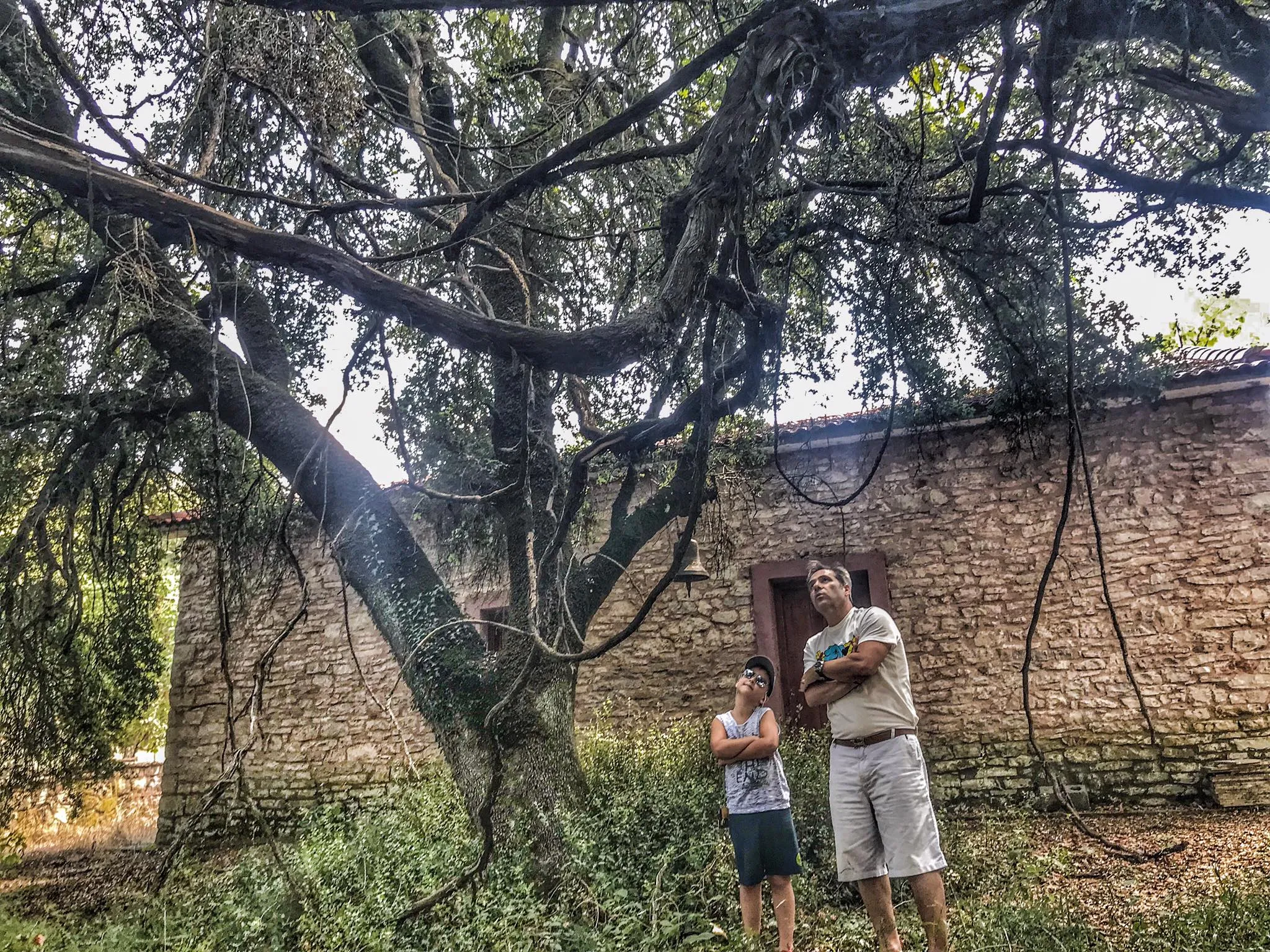
Τhe Mystery of the Pausanias vine
Over the next few weeks, I will be recounting unique stories of the Greek vineyard, that I have come across in my travels during recent years. These I will be sharing in both the English and the Greek section of karakasis.mw. Today, I will be beginning with the so-called Pausanias vine.
On the internet, there are scattered references to an ancient vine that Pausanias, the Traveler (110-180 AD), visited in 172 AD. According to tradition, he wanted to check the truth of a rumour about the trout in Aroanio River, which was said to sing like a wood thrush. In his book Arcadika (Chapter 21) he writes: “In Aroanio river there are fish, the so-called varieties, for which they say sound similar to the wood thrush. I saw these fish caught. Although I remained by the river until sunset, so the fish would start calling, as they say, I didn't hear them make a sound at all”. He is then said to have rested on a vine that impressed him (it isn't certain if there is a specific reference to this at some point in his work, or if this is held by tradition, which is just as important).
Subscribe to Continue Reading
This premium blog post is restricted. Subscribe to get access to all blog posts and unlock our complete library of Greek wines, varieties, and expert insights.
- Email updates (1–2 / month)
- Access to free posts
- 1 featured article unlocked every month
- Special subscription offers
Aficionado
For enthusiasts and trade professionals who want full article access
Subscribe Now- Full access to all subscriber-only posts
- Full access to wine reviews and grape varieties sections
- Executive summaries for major features/reports
- Reliable, focused information on Greek wine, in an international voice
Aficionado Premium
For advanced readers, sommeliers & buyers needing deep documentation
Go Premium- Everything in Aficionado, plus:
- Full access to all Reports (6 to date)
- Access to approximately two new reports per year
- Executive summaries for major features/reports
- Reliable, focused information on Greek wine, in an international voice
Professional
For importers, retailers, restaurants, producers, and trade press
Get Professional- Everything in Aficionado Premium, plus:
- Publication rights for reviews and short tasting notes (up to 50 words)
- Article excerpt rights (up to 120 words, up to 3 excerpts/month)
- Priority support (email) for usage/attribution questions
- B2B invoicing with VAT
- Mandatory attribution required with active link where possible
Already have an account?
Sign in here